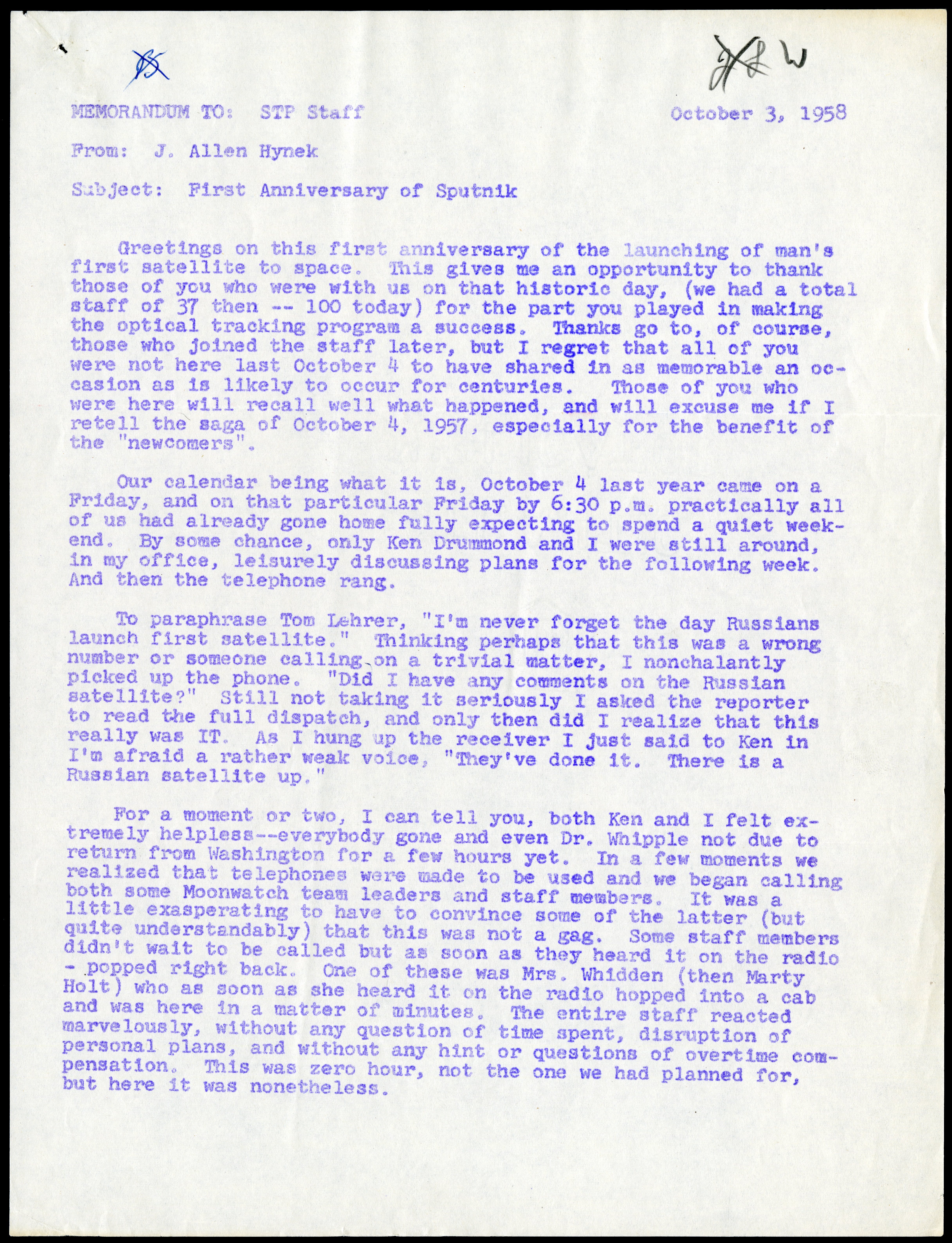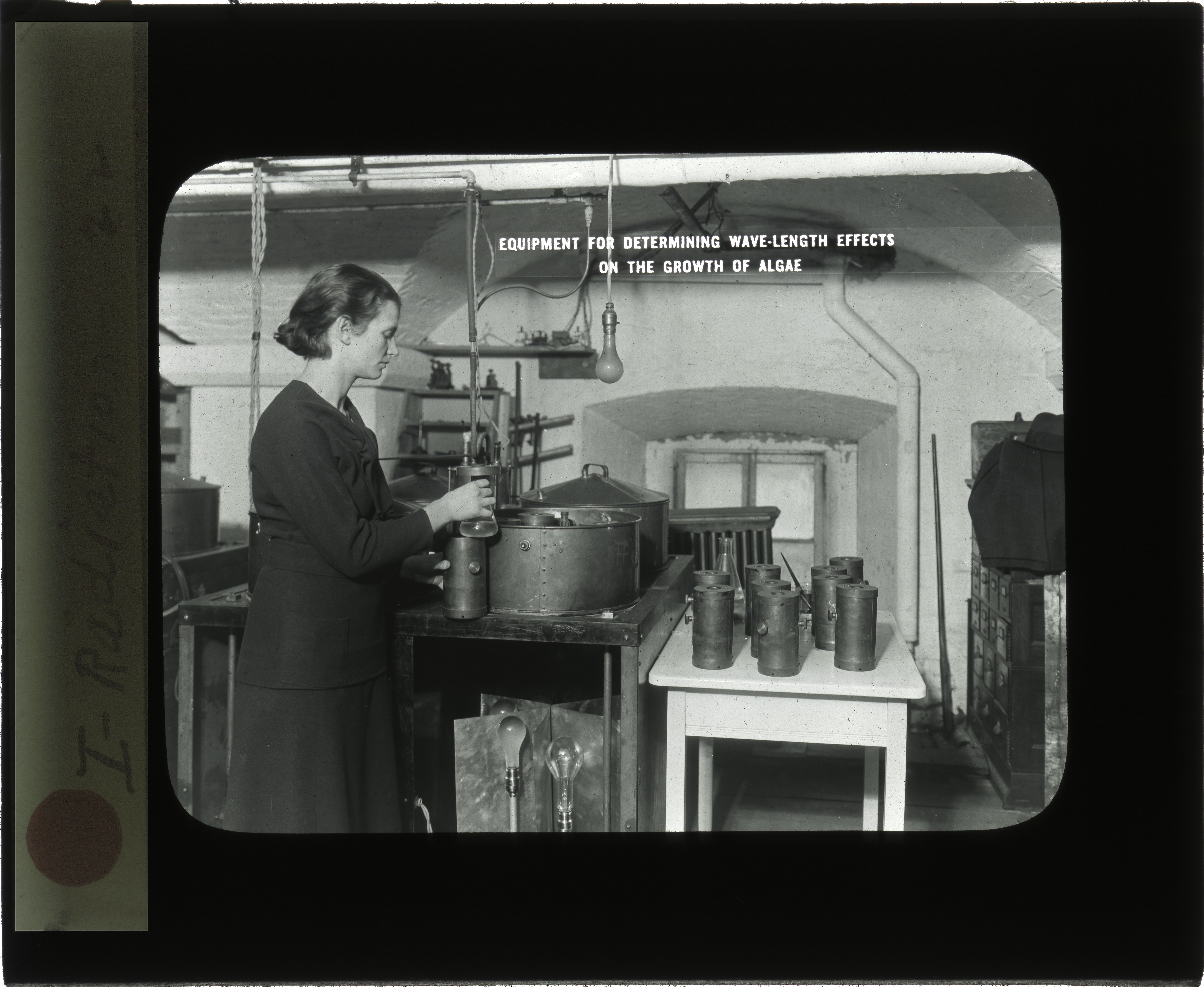Results for "Smithsonian Astrophysical Observatory. Meteor Research Program"

Right Places at the Right Time
- Date: October 21, 2013
- Creator: Tammy L. Peters
- Description: Recollections of the October 4, 1957, Sputnik I launch and the Smithsonian Astrophysical Observatory's Satellite Tracking Program.
- Blog Post
The Smithsonian and the Solar Eclipse
- Date: August 8, 2017
- Creator: Hillary Brady
- Description: The Smithsonian has a history of eclipse-ready public programming! How the Smithsonian has worked with the public in 1972, and today, to help visitors view eclipses safely.
- Blog Post
Link Love: 10/8/2010
- Date: October 8, 2010
- Creator: Catherine Shteynberg
- Description: Access the official records of the Smithsonian Institution and learn about its history, key events, people, and research.
- Blog Post
Stellar Evolution: A Journey with Chandra
- Date: April 25, 2012
- Description: The Chandra X-ray Observatory explains the origins of recently added image of stellar evolution to the Smithsonian Flickr Commons stream.

100 Women in Science in Smithsonian History
- Date: January 6, 2022
- Creator: Emily Niekrasz
- Description: Geologist Dr. Ursula Marvin studied Moon rocks from the Apollo missions and meteorites in Antarctica. Throughout her career with the Smithsonian Astrophysical Observatory, Marvin championed women in science. She delivered lectures about her own experiences as a woman in geology and participated in programing to help advance women's careers. She was likely inspired to support
- Blog Post
What’s in a Name? Uncovering Early Women Computers
- Date: December 3, 2019
- Description: We’re uncovering names of some of the earliest women in science at the Smithsonian.
- Blog Post
"If you feed them, they will come."
- Date: May 23, 2013
- Creator: Ellen Alers
- Description: Operation Moonwatch created an international network of dedicated and enthusiastic volunteer sky-watchers of both genders and from every walk-of-life. These citizen-scientists joined professional astronomers to track and report on satellites travelling through the night sky. Food and location played a role in keeping volunteers engaged with Operation Moonwatch.

Smithsonian Women in Science
- Date: September 17, 2019
- Creator: Dr. Elizabeth Harmon
- Description: Learn how we’re creating a better record of women in science at the Smithsonian.
- Blog Post
Documenting the Smithsonian’s Pandemic Response
- Date: March 16, 2021
- Creator: Jennifer Wright
- Description: While teleworking for the last year, the Archives has been busy capturing web content that documents the Smithsonian’s response to the COVID-19 pandemic.

Science Conversations in the Shenandoah
- Date: September 6, 2018
- Creator: Mitch Toda
- Description: In February 1975, twenty Smithsonian scientists gathered at the National Zoo's Conservation Research Center in Front Royal, Virginia to talk about their research and the future of science at the Smithsonian.
- Blog Post
Pickering’s Women?
- Date: May 8, 2009
- Creator: Catherine Shteynberg
- Description: Access the official records of the Smithsonian Institution and learn about its history, key events, people, and research.
- Blog Post
Let us know what you think about the new Smithsonian Commons
- Date: July 13, 2010
- Creator: Catherine Shteynberg
- Description: [caption id="attachment_7367" align="aligncenter" width="417" caption="Slide from Mike Edson, the Smithsonian's head of Web and New Media Strategy, Slideshare presentation on the Smithsonian Commons."][/caption] Just recently, the Smithsonian released a prototype of the Smithsonian Commons—a new part of the digital plan at the Smithsonian that aims to stimulate “learning,
